This week, we learn how nerve cells can be transplanted to correct metabolic disorder, investigate the long terms safety of statins in the fight against heart disease and find the coldest point water can reach whilst remaining a liquid. We also discover unearth the World's oldest fish hooks revealing the existence fisherman 40,000 years ago as well as bionic lenses, night vision materials and the effects of stress on the brain...
In this episode
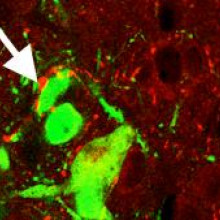
00:18 - Nerve transplants wire themselves into host brains
Nerve transplants wire themselves into host brains
Embryonic nerve cells transplanted into a recipient brain survive,  wire themselves up and can even correct a metabolic disorder in vulnerable individuals, scientists have discovered.
wire themselves up and can even correct a metabolic disorder in vulnerable individuals, scientists have discovered.
Successful brain repair in the future will almost certainly depend upon the implantation, within the injured or diseased nervous system, of healthy cells that can replace those damaged by degeneration.
But the fate of these fresh cells, when added to an abnormal brain, and whether they can functionally wire themselves up to and support existing nerve circuits, is poorly understood.
Now scientists have proved that these cells can do this by using cell transplantation techniques to remedy an obesity-triggering metabolic disorder in mice.
Writing in Science, Harvard scientist Jeffrey Macklis and his colleagues transplanted into the obese mice, which lack the receptor in their brains for a satiety-signal called leptin, 15,000 nerve cells collected from 13 day old mouse embryos.
The cells, which also synthesised a glowing-green pigment to discriminate them from the hosts' brain cells, were implanted into a region of the brain known as the medial hypothalamus, which controls appetite.
Five months later, the researchers looked for signs that the donor neurones were still present in the brain and were speaking electrically with their host brain neighbours.
The implanted cells, they found, had wired themselves in and were functional. They also found that, compared with control animals and mice that had received grafts from other brain regions, the treated animals were 30% lighter and had more normal blood glucose measurements.
This, say the scientists, is "proof of concept for cell mediated repair of a neuronal circuit controlling a complex phenotype."
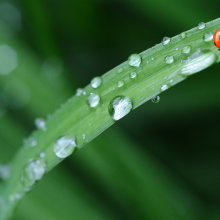
02:16 - The coldest point water can remain a liquid has been calculated
The coldest point water can remain a liquid has been calculated
If you ask any group of school children what temperature does pure water freeze at and you will normally get the answer 0 degrees celsius, which is the standard answer and it is the temperature below which ice is more stable than water, but that isn't the whole story.
It is quite easy to get liquid water below this temperature by just putting a bottle of very clean water in a freezer, because although a large ice crystal is more stable than liquid water, a very small one isn't so most of them shrink and melt before they get big enough to be stable, but how cold can you get liquid water?
Valeria Molinero and Emily Moore from the University of Utah decided to do away with experiments and try and solve the problem in a computer. This isn't easy, as forming ice intrinsically involves a lot of water molecules, and to get a meaningful result they had to model over 30 thousand water molecules interacting with one another, and they had to model water molecules as a single lump rather than as three atoms..
They found that as the water cooled, more and more of the water formed tetrahederal structures which were somewhere between ice and liquid water, in both structure and density which they call intermediate ice. This can then either convert to ice proper, or into a disordered glasslike structure when it finally froze.
After all this work they finally found the theoretical lowest temperature you can cool water to without freezing is -55 celsius.
This might seem quite academic, but supercooled water is very important in many types of cloud, and has been discovered there at -40 celcius, and understanding how water behaves at these temperatures will help understand clouds and so assist with weather and climate predictions.
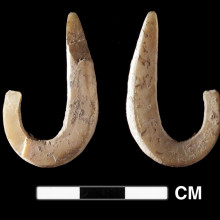
04:31 - First seafaring fisherman
First seafaring fisherman
The world's oldest tackle, together with evidence of deep-sea  fishing 40,000 years ago, has been unearthed in East Timor.
fishing 40,000 years ago, has been unearthed in East Timor.
Early human migrants, including those who first set foot in Australia 50,000 years ago, were clearly competent mariners. The journey from Eurasia into the northern part of the Australian continent would have involved crossing a 1500km wide deep-water archipelago, negotiatable only by boat and good seamanship. But archaeological evidence of these seafaring feats is sparse.
Now, however, Australian National University scientist Sue O'Connor and her colleagues, working at a site in East Timor called Jerimalai, have discovered evidence that early human inhabitants of the coastline were catching and consuming fish from the open ocean as far back as 42,000 years ago.
Bones belonging to over 20 different fish species were recovered from an excavation at the site, 50% of them belonging to so-called pelagic (open water) dwellers like tuna. To catch these, the Jerimalai settlers would have to have ventured out to sea armed, most probably, with nets.
But even more exciting is the discovery, also amongst the finds, of two primitive fishhooks carved from pieces of trochus shell and dating from about 24,000 years ago. This is the earliest evidence of fishhook manufacture yet described.
As the team point out in their description of the findings, published this week in Science, "Capturing fish such as tuna requires high levels of planning and complex maritime technology. The evidence implies that the inhabitants were fishing in the deep sea."
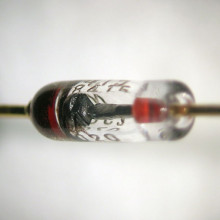
06:54 - A Diode for light
A Diode for light
For many years engineers have wanted to use light instead of electricity to build circuits with. It moves slightly faster, but more importantly signals can pass one another without interfering. This lack of interference makes it very difficult to make light beams interact when you want them to.
One of the simplest electronic devices is the diode, effectively a one way  valve for electricity, in light they would be a true one way mirror, and are very difficult to build. So far they have been mm or even cm across and it hasn't been possible to integrate them into a silicon chip. But Caroline Ross and collegues at MIT have managed to do this.
valve for electricity, in light they would be a true one way mirror, and are very difficult to build. So far they have been mm or even cm across and it hasn't been possible to integrate them into a silicon chip. But Caroline Ross and collegues at MIT have managed to do this.
They have built a structure which involves a tiny conducting silicon loop electrical resonator which can absorb energy from light which is passing through a nearby piece of garnet covering half of the loop.
This garnet is magnetic as well as transparent, so applying a magnetic field means that the loop will absorb a different colour of light in one direction to the other, so if you pick your colour it will be absorbed 100 times more in one direction but than the other.
In the first case this type of device would probably be built in front of a laser to stop reflections interfering in its operation, but a diode is a vital component for building more complex photonic circuits in the future. Which amongst other things should help route the optical signals which move most of the data around the internet.
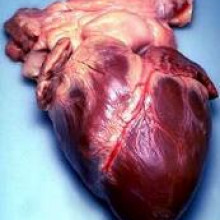
09:19 - The Safety of Statins
The Safety of Statins
Richard Bulbulia, University of Oxford
Ben - Also this week, a study published in the Lancet has confirmed the safety of the widely used class of drugs known as statins. These are the most commonly used drugs worldwide for heart disease and are taken by millions of people globally. A randomised heart protection study back in the mid-1990s found the drugs to be highly effective against heart disease but subsequent epidemiological studies did raise some fears of an increased risk of cancer associated with taking them. Now Richard Bulbulia from the University of Oxford has followed up the participants in that study from the '90s to have a look at any long term effects. Richard, thank you ever so much for joining us.
Richard - Good evening, Ben.
Ben - What were they really looking at back in the '90s? Were they just confirming that statins did work and did do what we think they should?
Richard - Observational studies made it clear, 30 or 40 years ago, that people with higher levels of bad cholesterol had increased risk of vascular disease and to test whether this association was causal, people did large, randomised trials such as the Heart Protection Study which lowered cholesterol and consequently lowered vascular risk by around one quarter. But the same epidemiological studies that highlighted the relationship between cholesterol and vascular risk also showed an increased risk of certain cancers and other causes of non-vascular death with lower cholesterol levels, and those of us who sort of responsibly interpreted that data suggested that these findings were due to something called reverse causality whereby it's the disease such as the cancer which causes the low cholesterol rather than the converse. But the concerns were out there and they substantially delayed the widespread use of statins.
Now, the Heart Protection Study which reported its main results in 2001 had reassurance in that there were no excess risks of cancer or other non-vascular deaths associated with taking simvastatin 40 mg for around 5 years. But that 5-year period was really too short to reliably address the prevalent concerns about the risks and safety of lowering cholesterol in many millions of people. And for that reason, we carried on following up all 17,000 surviving Heart Protection Study participants for a further 6 years.
Ben - So what have you actually been doing to follow them up or are you just looking at medical records and incidences of different diseases or are you continuing to investigate more deeply what the lifestyle factors are? 
Richard - We followed up the survivors in two ways. We asked them to complete postal questionnaires and the vast majority of the participants did so, and on these postal questionnaires, they told us certain things about their statin use after the trial period, whether or not they've been to a hospital, had any clinical events, and also indicated whether or not they'd be happy to receive a subsequent questionnaire the following year. That questionnaire procedure was augmented by accessing national registries for cancer incidents and they're death certification for people who either had cancers or died during the follow up period.
Ben - Surely, after the original trial, the people who had been taking placebo, as it was a controlled trial, they must've then been offered the statins. So surely, actually, the conditions have changed. How do you take account for that?
Richard - That's a very important point. At the end of the trial, it was clear that everybody in the Heart Protection Study would benefit from at least discussing whether or not they should take the statin with their GP and all were encouraged to do so. Gratifyingly, over the 6-year period, more and more people in both treatment groups have began taking the statin therapy, so by the end of the trial, the average use of statins was around 75% in both original treatment groups. So, our long term follow up results, which were in the Lancet this week, actually assessed the effect of the initial 5-year randomisation to either simvastatin or placebo over an 11-year period.
Ben - I guess the fact that people did start taking them after, also means that you could actually stratify your results and show that people have been taking it for this long, you see the following effects, but if people have been taking it for twice as long, then either you see more effects or you still don't see any effect which should help you to be able to say the concerns about cancer were in fact not actually applicable.
Richard - That's correct and there were three main findings in our study. The first two connected are looking at benefits. I mean, it's important to remember that statins are incredibly effective form of treatment. During the randomised phase of the trial, the absolute benefits of statin therapy increased as treatment continued. With year on year reductions of around one quarter, after the first in trial year, and second, the absolute benefits that those originally allocated simvastatin accrued during the in trial period persisted in the post trial period. That is to say, the people who were originally on placebo and then switched to statin therapy after the trial had closed, never caught up with the original simvastatin group. And those two findings do show that starting statins early and continuing them long term is necessary to maximise the reductions in major vascular events.
And following on from that clear message, it's also very reassuring to note that over an 11-year period, there was no suggestion of an emergence of hazard on cancer either globally or in certain specific subtypes of cancer or indeed other forms of non-vascular disease and specifically non-vascular death emerging in this large cohort of trial participants.
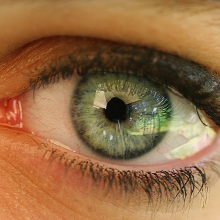
14:57 - Bionic Lenses, Night Vision and Stress on the Brain...
Bionic Lenses, Night Vision and Stress on the Brain...
Babak Parviz, University of Washington; Erno Hermans, Donders Institute; Zhengwei Pan, University of Georgia; Andrew Shuiteman, Kew Gardens
Flashing emails before your eyes
A
contact lens capable of displaying electronic information, quite literally in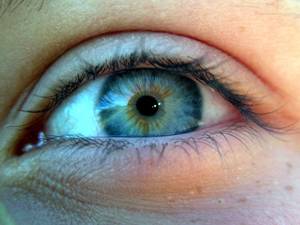 front of your eyes, is being developed by US scientists.
front of your eyes, is being developed by US scientists.
Challenges include powering the device and displaying complex information such as text, But Babak Parviz and colleagues at the University of Washington have so far combined a miniature radio receiver and light source within a lens and wirelessly sent single pixels of data safely into the eyes of rabbits.
Babak - You can imagine your cell phone might some information to your contact lens and the contact lens has an antenna that can receive the information, has a radio that can process the information, and drawn a display with it, and there are some extra focusing mechanism that allows you to see the image. If you think about our daily routines we interact with a number of displays, the TV screen and the computer displays, the cell phone display this, but in a sense, we don't really need all of them, if we have a personal display that is our contact lens, we can get rid of all these extra displays and just have one display that is personalised to the user.
---
Stress on the Brain
Sudden stress can cause
changes in connections between different regions of the brain
Short bursts of stress are known to sharpen senses, impair abilities to deliberate and create fearful arousal, although how this was achieved by the brain wasn't known.
Now, by exposing human volunteers to clips of violent and non violent films and imaging their brain activity, Erno Hermans and colleagues from the Donders Institute have discovered the changes in the brain causing these responses.
Erno - We see change in the way brain regions communicate with each other. Those are regions that are involved in reorienting attention and also regulation of your autonomic nervous system, and of regulation of the stress system. So what we see here is that those regions sort of become active together and form a network as if they're integrating information across all these domains. This might be a model for studying what happens in potentially traumatic situations.
---
Non-Stop Vision in the Dark
A new
materialthat can glow for over two weeks after just minutes of exposure to sunlight has been developed by scientists at the University of Georgia.
A mixture of chromium ions embedded in a matrix of zinc, gallium and germanium oxides can soak up the energy in visible light, releasing near infra-red wavelengths and providing night vision for up to 15 days even in cloudy or overcast conditions.
Zhengwei - The first one lies in military defence and the law enforcement, and the other thing is solar energy absorption and storage. The third application is we can make the material into nanoparticles so that we can out these particles this molecule and particle into the body so that it can link to some tumour cells for bio-imaging.
---
Night Flowering Orchid
The first night-flowering orchid has been discovered by scientists at Kew Gardens.
The flower, now named Bulbophillum nocturnum, originates from the Island of New Britain near Papua New Guinea, and was found to open a few hours after dusk and remain that way until a few hours after dawn. But it only does this for one night.
The species is the only orchid known to flower only at night, with the reasons behind this behaviour a subject of speculation for Orchid expert Andre Schuiteman from Kew Gardens.
Andre - Out of 25,000 species of orchids known approximately, this is the first one, officially we are certain that it is flowering at night. This is quite strange because related species flower during the day time. We think the flower opens at night because it is pollinated by flies that are active after dark or maybe early in the morning, when it's just getting dawn, probably to escape predators.
More information on the orchid can be found on the Kew gardens website at
kew.org.
Related Content
- Previous Why can't I focus on a reflection?
- Next Imaging the Invisible










Comments
Add a comment